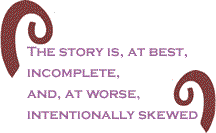|
To
date, more than 230, 000 African Americans have died of
AIDS.
According
to the Centers for Disease Control (CDC), 1 in 22 African
Americans will be diagnoses HIV-positive in their lifetime.
And, it�s the leading cause of death among African American
women between the ages of 25-34, and African American men
between the ages of 35-44.

The
inception of World AIDS Day began, many would say, when
the world was in need of prayer. But that was all we had
at the time.
In
1988, the World Health Organization designated Dec. 1 as
the day to pause and reflect on the magnitude of the devastating
effect this disease was having on domestic and global communities.
Because
there is still neither a vaccine nor a cure, a prayer is
sometimes all a person thinks he or she has in the face
of an epidemic that shows no sign of abating.
But
in 2010 we can do more than just pray now. We can act!
�If
we don�t work together to stop the spread of HIV/AIDS in
our community, then who will? Let�s take matters into our
own hands and stop the spread of the epidemic. It is a new
day,� Roslyn M. Brock, Chairman, NAACP National Board of
Directors, wrote in an open letter in November to the Harvard
University Center for AIDS Research two-day symposium �The
Forgotten Epidemic: HIV/AIDS Crisis in Black America.�
The
symposium examined the increasingly critical HIV/AIDS epidemic
in Black America.  This
symposium was the first in what will be a series of meetings,
exploring how and why HIV/AIDS has become an overwhelmingly
Black disease in the United States. This
symposium was the first in what will be a series of meetings,
exploring how and why HIV/AIDS has become an overwhelmingly
Black disease in the United States.
According
to the Black AIDS Institute�s August 2008 report titled,
�Left Behind,� the number of people living with HIV in Black
America exceeds the HIV population in seven of the fifteen
focus countries in the U.S. President�s Emergency Plan for
AIDS Relief (PEPFAR) initiative, an initiative helping to
save the lives of those suffering from HIV/AIDS around the
world in countries like Haiti, Dominican Republic, India,
South Africa, to name a few.
In
other words, if black America were its own country, standing on its own
like Haiti
or Nigeria, black Americans would
rate 16th with the epidemic in the world. And the epidemic
is heavily concentrated in urban enclaves like Detroit,
New York, Newark,
Washington, D.C and the Deep
South.
There
are many persistent social and economic factors contributing
to the high rates of the epidemic in the African American
community - racism, poverty, health care disparity, violence,
to name just a few, but the biggest attitudinal factor still
contributing to the epidemic and showing no sign of abating
is homophobia.
While
we know that that epidemic moves along the fault lines of
race, class, gender and sexual orientation, and that HIV
transmission is tied to specific high-risk behaviors that
are not exclusive to any one sexual orientation, homophobia
still continues to be one of the major barriers to ending
the AIDS epidemic.
 And
although famous HIV-positive heterosexual African Americans,
like tennis great Arthur Ashe, news anchorman Max Robinson,
and rapper Eazy all died of AIDS, and basketball giant Earvin
�Magic� Johnson who is still living with the virus highlight
the fact that anyone can contract the virus, many still
see the epidemic as a �white gay disease,� suggesting being
gay or having sex with someone of the same gender puts you
immediately at high risk. And
although famous HIV-positive heterosexual African Americans,
like tennis great Arthur Ashe, news anchorman Max Robinson,
and rapper Eazy all died of AIDS, and basketball giant Earvin
�Magic� Johnson who is still living with the virus highlight
the fact that anyone can contract the virus, many still
see the epidemic as a �white gay disease,� suggesting being
gay or having sex with someone of the same gender puts you
immediately at high risk.
One
of the reasons for this, in my opinion, is how data from
the Centers for Disease Control (CDC) is read and reporting
on the epidemic perpetuates the confusion.
For
example, �MSM,� is the CDC clinical control-coined acronym
for �men who have sex with men,� but it should not be used
to depict openly gay or bisexual men individually or collectively.
And the controversial term �Down Low� (DL) wrongly accusing
black MSMs for spreading the virus throughout the African
American heterosexual community should not be used to depict
openly gay or bisexual men individually or collectively.
But
many conflate the subgroups to be a synonym for �MSMs.�
So when the CDC puts out the data that MSM of all races
remain the group most severely affected by HIV, and white
MSMs account for the largest number of annual new HIV infections
of any group in the U.S., followed by MSMs of African descent,
many in the African American community still think of the
epidemic as a �white gay disease.� And with more than 18,000
people with AIDS still dying each year in the U.S. where gay, bisexual and
MSM represent the majority of persons who have died, the
homophobia stays in place.
While
the data may be accurate about this subgroup of men in the
African American community, the story is, at best, incomplete,
and, at worse, intentionally skewed.
Although
awareness of HIV/AIDS is anemic throughout communities of
the African Diaspora, it is gay, bisexual and MSM who are
more easily identified with having the virus because they
have been and are continually tracked in CDC studies; thus,
there is more data on these groups.
But
the truth is this: while nearly 600,000 African Americans
are living with HIV, and as many 30,000 newly infected each
year, there is still within the black community one in five
living with HIV and unaware of their infection; and, they
are disproportionately heterosexuals.

As
long as we continue to think of HIV/AIDS as a gay disease,
we�ll not protect ourselves from this epidemic.
BlackCommentator.com
Editorial Board member, the Rev. Irene Monroe, is a religion
columnist, theologian, and public speaker. She is the Coordinator of the
African-American Roundtable of the Center for Lesbian and
Gay Studies in Religion and Ministry (CLGS) at the Pacific
School of Religion.
A native of Brooklyn,
Rev. Monroe is a graduate from Wellesley College and Union
Theological Seminary at Columbia University, and served
as a pastor at an African-American church before coming
to Harvard Divinity School for her doctorate as a Ford Fellow.
 She
was recently named to MSNBC�s list of 10 Black Women You Should Know. Reverend Monroe is the author
of Let Your Light Shine Like a Rainbow Always: Meditations on Bible
Prayers for Not�So�Everyday Moments. As an African-American
feminist theologian, she speaks for a sector of society
that is frequently invisible. Her website
is irenemonroe.com.
Click here
to contact the Rev. Monroe. She
was recently named to MSNBC�s list of 10 Black Women You Should Know. Reverend Monroe is the author
of Let Your Light Shine Like a Rainbow Always: Meditations on Bible
Prayers for Not�So�Everyday Moments. As an African-American
feminist theologian, she speaks for a sector of society
that is frequently invisible. Her website
is irenemonroe.com.
Click here
to contact the Rev. Monroe.
|

